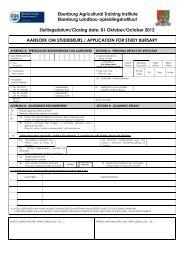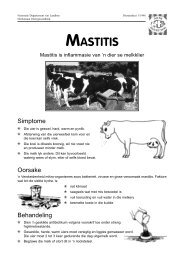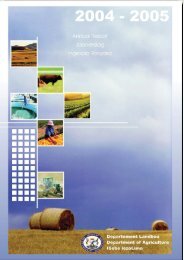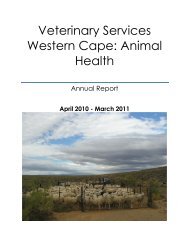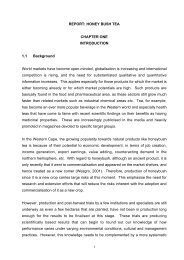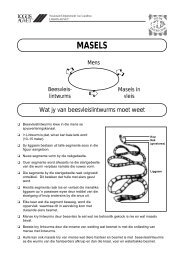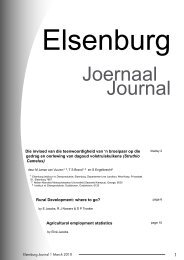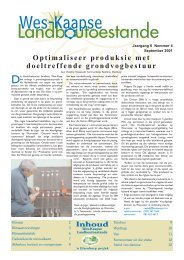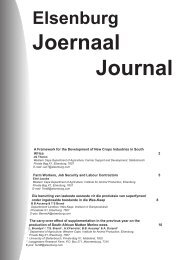The PROVIDE Project Standard Computable General Equilibrium ...
The PROVIDE Project Standard Computable General Equilibrium ...
The PROVIDE Project Standard Computable General Equilibrium ...
Create successful ePaper yourself
Turn your PDF publications into a flip-book with our unique Google optimized e-Paper software.
<strong>PROVIDE</strong> <strong>Project</strong> Technical Paper 2003: 3 October 2003<br />
4. Model Closure Conditions or Rules<br />
In mathematical programming terms the model closure conditions are, at their simplest, a<br />
matter of ensuring that the numbers of equations and variables are consistent. However<br />
economic theoretic dimensions of model closure rules are more complex, and, as would be<br />
expected in the context of an economic model, more important. <strong>The</strong> essence of model closure<br />
rules is that they define important and fundamental differences in perceptions of how an<br />
economic system operates (see Sen, 1963; Pyatt, 1987; Kilkenny and Robinson, 1990). <strong>The</strong><br />
closure rules can be perceived as operating on two levels; on a general level whereby the<br />
closure rules relate to macroeconomic considerations, e.g., is investment expenditure<br />
determined by the volume of savings or exogenously, and on a specific level where the closure<br />
rules are used to capture particular features of an economic system, e.g., the degree of<br />
intersectoral capital mobility.<br />
This model allows for a range of both general and specific closure rules. <strong>The</strong> discussion<br />
below provides details of the main options available with this formulation of the model by<br />
reference to the accounts to which the rules refer.<br />
4.1. Foreign Exchange Account Closure<br />
<strong>The</strong> closure of the rest of the world account can be achieved by fixing either the exchange rate<br />
variable (C1a) or the balance on the current account (C1b). Fixing the exchange rate is<br />
appropriate for countries with a fixed exchange rate regime whilst fixing the current account<br />
balance is appropriate for countries that face restrictions on the value of the current account<br />
balance, e.g., countries following structural adjustment programmes.<br />
or<br />
ER<br />
= ER<br />
(C1a)<br />
CAPWOR = CAPWOR . (C1b)<br />
It is a common practice to fix a variable at its initial level by using the associated parameter,<br />
i.e., ***0, but it is possible to fix the variable to any appropriate value.<br />
<strong>The</strong> model is formulated with the world prices for traded commodities declared as<br />
variables, i.e., PWM c and PWE c . If a strong small country assumption is adopted, i.e., the<br />
country is assumed to be a price taker on all world commodity markets, then all world prices<br />
will be fixed. When calibrating the model the world prices will be fixed at their initial levels,<br />
i.e.,<br />
© S. McDonald<br />
41




